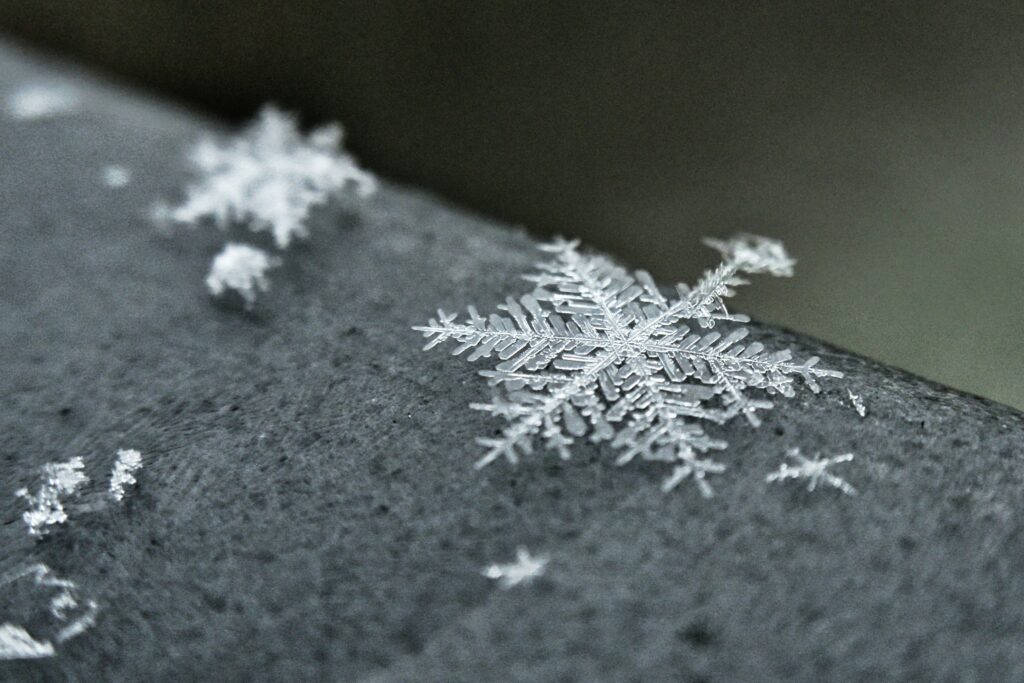From a drop of water to a snowflake

Winter arrives in Germany. When temperatures are low, precipitation falls to the ground as snow. Here are a few interesting facts about the formation of ice crystals and snowflakes:
❄️ Water vapour can freeze directly in the clouds, but this requires temperatures of around minus 40 °C.
❄️ It is therefore more likely that water molecules attach to tiny dust particles present in the air. Below 0 °C, these become supercooled droplets, which freeze on further cooling.
❄️ The resulting ice crystals are almost always hexagonal, as the water molecules are arranged hexagonally.
❄️ By adding further water molecules, branches are formed that are very similar to each other but are slightly asymmetrical in shape in nature.
❄️ The growth of the ice crystals depends on the ambient temperature and humidity. The ice crystal forms are categorised as platelets, ice columns, ice needles and ice prisms.
❄️ Snowflakes are formed when several crystals collide with each other on their way to the ground and become entangled.
We wish you lots of fun in the snow! ❄️☃️🌨️
